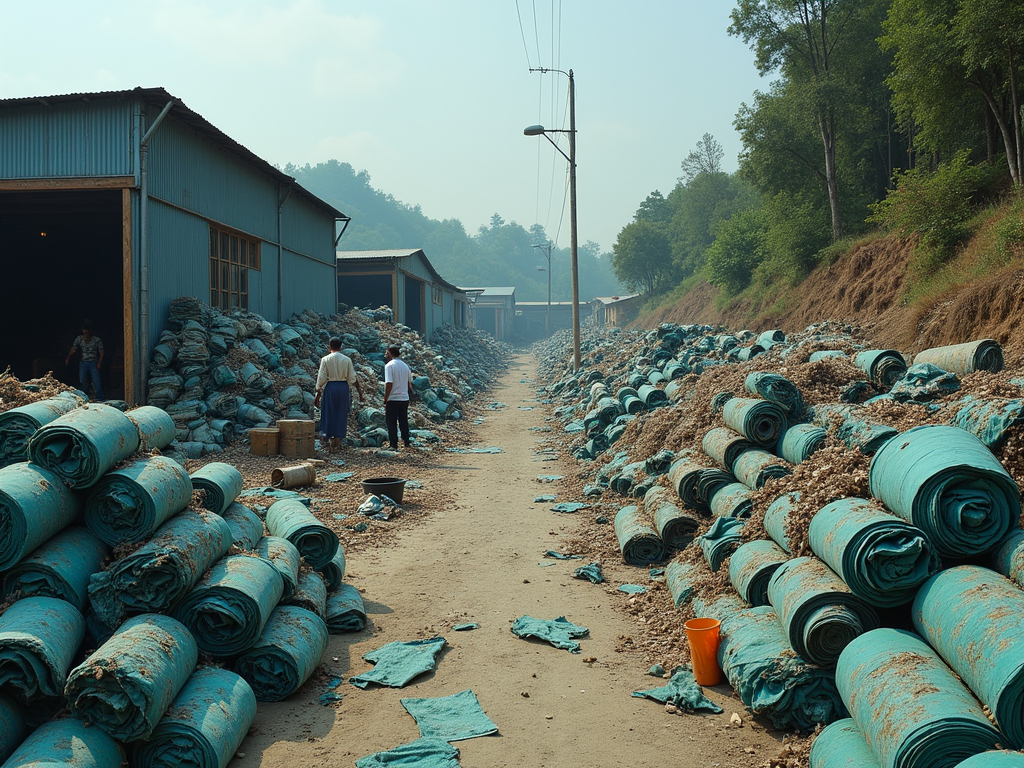Disposing of old carpet can be a daunting task, but doing it the right way is essential for both environmental and legal reasons. Whether you’re upgrading your flooring or decluttering your space, there are proper methods to ensure your carpet is disposed of responsibly. This article explores effective ways to dispose of carpet, highlighting eco-friendly options and practical tips to make the process smoother.
Understanding the Disposal Options

When it comes to disposing of carpet, knowing your options is key. Carpets can be bulky and contain materials that aren’t easily recyclable, which makes understanding the disposal method crucial. Below are the main disposal options available:
- Landfill: While not the most eco-friendly option, many carpets end up in landfills. It’s important to check local regulations as some municipalities have specific rules about disposal.
- Recycling: Some companies specialize in carpet recycling. They can break down the materials for reuse in new products, reducing waste.
- Donation: If your carpet is still in usable condition, consider donating it to local charities or community organizations.
- Professional Removal: Hiring a professional service not only ensures proper disposal but can handle the removal process quickly and efficiently.
Preparing the Carpet for Disposal

Preparation is key before disposing of your carpet. Start by measuring the carpet to know how much you need to remove. Next, gather the right tools, including a utility knife, heavy-duty garbage bags, and gloves. Here’s a step-by-step guide to prepare your carpet for disposal:
- Clear the Area: Move all furniture and items off the carpet to provide an unobstructed workspace.
- Cut the Carpet: Using a utility knife, carefully cut the carpet into manageable sections. Aim for pieces measuring around 6-8 feet to make them easier to handle.
- Remove Padding: Don’t forget the padding! This can often be recycled or disposed of similarly to the carpet.
- Secure the Waste: Place the cut pieces into heavy-duty garbage bags, sealing them tightly to prevent them from tearing.
- Label Bags: If you’re planning to recycle, label the bags accordingly to help the disposal service know how to process the materials.
Finding a Disposal Facility
Once your carpet is prepared, the next step is to find a suitable disposal facility. Depending on your chosen method, options will vary. To find a facility that meets your needs, consider these tips:
- Research Local Services: Look for companies specializing in flooring removal and recycling services in your area. Websites and local listings often have reviews to help you choose.
- Contact Local Waste Management: Your local waste management authority can provide information on designated disposal days or locations for carpets.
- Inquire About Donations: Reach out to local charities or organizations that accept carpet donations and confirm their requirements.
- Check for Eco-Friendly Options: Some facilities may also offer eco-friendly disposal, ensuring your carpet won’t harm the environment.
If you’re looking for eco-friendly disposal methods, consider the following approaches that minimize environmental impact:
- Choose Recyclable Materials: When purchasing new carpets, consider those made from natural or recyclable materials. This reduces future waste.
- Participate in Take-Back Programs: Some manufacturers offer take-back programs where they recycle old materials upon the purchase of new ones.
- Upcycling: Get creative by using old carpet remnants for various DIY projects in your home, such as rugs or insulation for gardening.
- Check for Local Events: Participate in community recycling drives that may include carpet disposal as part of the event.
Conclusion
Disposing of carpet the right way is not only about convenience but also about making responsible choices. By understanding your disposal options, preparing your carpet, and utilizing eco-friendly practices, you can significantly reduce your environmental footprint. Whether you choose recycling, donating, or proper disposal through professionals, each step you take contributes to better waste management and the health of our planet. Always remember to check local laws and guidelines to ensure compliance and avoid any mishaps during the disposal process.
Frequently Asked Questions
1. Can I throw my old carpet in the regular trash?
In many areas, you cannot simply throw carpets in the regular trash due to their size and material. Always check local regulations for proper disposal methods.
2. How can I recycle my carpet?
Look for local recycling centers that accept carpets. Companies like carpet manufacturers often have recycling programs that can help you with this process.
3. What should I do if my carpet is still in good condition?
If your carpet is in good shape, consider donating it to a local charity, school, or community center that might benefit from it.
4. Are there any costs associated with carpet disposal?
Yes, some disposal services or recycling facilities may charge a fee for carpet disposal. Always inquire ahead of time to avoid unexpected costs.
5. Can old carpet cause health problems if not disposed of correctly?
Yes, old carpets can harbor dust, mold, and allergens. Properly disposing of them helps maintain a healthy indoor environment and reduces potential health risks.